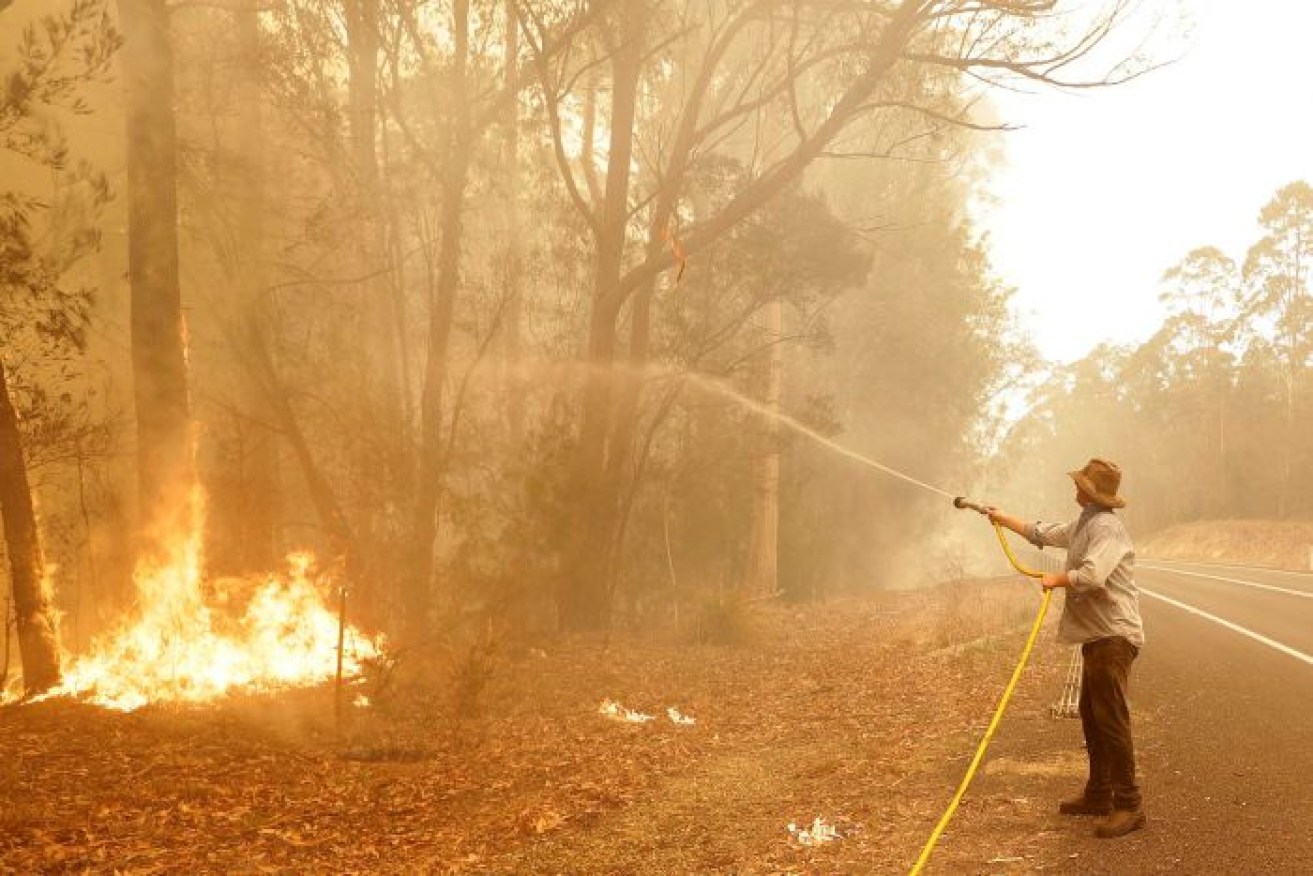Telco, NBN failures during bushfire crisis reveal cracks in regional, rural crisis coverage

Telco, NBN failures during bushfire crisis reveals cracks in regional, rural crisis coverage Photo: Rick Rycroft
As fire rushed towards Moruya Heads on the NSW South Coast on New Year’s Eve, Fiona Whitelaw and her family were relying on a wind change to save their house.
Unsure when it would arrive, they were continuously monitoring weather and fire information – but then mobile coverage, the National Broadband Network (NBN) and the local ABC radio transmitter all dropped out.
The only way the Whitelaws could communicate was through their landline, which still operates through the old system of copper cables, and can still work when a home loses power.

Fiona Whitelaw says copper landlines should not be cut off as part of the NBN rollout. Photo: Ben Deacon
“I think when it was all happening we were just so terrified,” Ms Whitelaw said.
“[We] put a lot of faith in the technology, and anyone that lives in regional Australia will tell you that that’s probably not worth a pinch of shit.”
If the fire had come a month later, the copper network would have been disconnected as part of the NBN rollout.
“The main thing that would help would be, if there’s existing copper line communication, just leave it there,” Ms Whitelaw said.
“The cost of maintaining it can’t be anywhere near the cost of losing a whole suburb worth of houses and people and businesses.”
Key points:
- Residents whose communications were cut off during the bushfire crisis say infrastructure is not up to scratch
- One expert says the fires should serve as a wake-up call to the Federal Government
- Telstra says it will examine ways to improve its network’s resilience
Emergency telecommunications plan
Telecommunications analyst Paul Budde said the bushfire crisis was a wake-up call for the Federal Government to act.
He said the old copper network should remain in place, and that telecommunications infrastructure should be buried underground.
“What you need is a national emergency telecommunications plan — get our telecommunications companies together and then we can find solutions,” Mr Budde said.
“With this crisis at hand, we can get the Government to start considering these long-term options and long-term funding … for communications safety in rural and regional areas.”
#BREAKING: Police have warned that all telecommunications, including mobile phone coverage, will be lost tonight on the NSW South Coast, between Nowra and Moruya. Hospitals will be among the facilities affected.
— ABC News (@abcnews) December 31, 2019
The Federal Communications Minister Paul Fletcher said no system could completely withstand bushfires.
“The existing local loop, the copper local loop is not impervious to bushfires,” he said.
If a bushfire goes through and power is lost to an exchange then services will cease operating.
“There will be detailed reviews both within the individual telcos and more broadly as to the lessons we can learn about network resilience in the face of severe bushfires.”
Mr Budde said there was a case for regional and rural Australia having fibre-optic cables.
“While that might be cost costly … I think on the other side, the social, economic benefits are as important – if not more important – in situations like this,” he said.
The ABC’s Mt Wanderer FM transmitter was damaged in the #nswfires. ABC North East NSW is still on 603 AM in Batemans Bay, Narooma and Moruya. Also:
Bega 810 AM
Bombala 94.1 FM
Cooma 1602 AM
Eden 106.3 FM
Jindabyne 95.5 FM
Thredbo 88.9 FM pic.twitter.com/HaeIBsdClO— ABC Rural (@ABCRural) January 2, 2020
NBN bound to ‘crap out’
Amanda Leck, the director of community safety at the National Council for Fire and Emergency Services (AFAC), said her service has been concerned about NBN failures in a disaster situation for more than two years.
“I think that this is a big discussion … to look at all the infrastructure and supply chain, and effectively what needs to be hardened for future disaster risk,” Ms Leck said.
Ms Whitelaw said she assumed the NBN would not last long in an emergency.
“It might be that one day the NBN’s awesome and it works great, but at the moment they just need to be realistic about the shortcomings of the technology that we’ve got.”
In a statement, the NBN said it “[advised] customers that their NBN service will not work in a power outage, and it is always wise to keep mobile devices charged in the event of an emergency”.
Mobile tower backup
More than 100 mobile phone towers were impacted at the height of the crisis, according to Mr Fletcher, with the majority affected by power outages.
“In many cases, the priority was to get power back to those base stations,” the Minister said.
“For example, by getting access to the site and being able to top up the diesel generators with fuel.”
Mobile phone towers typically have backup battery power of about 10 hours, but Mr Budde said that is not enough.
“Because these are prolonged fires it’s not 10 hours, it can be 10 days. So in a situation like that you need backup generators,” he said.
Mr Budde said more backup power and ability for fire crews to replenish generators needed to be considered.
Telstra told the ABC it would engage with industry and government on improving network resilience.
“All of our back-up power systems contain high-powered batteries, with our larger sites including generators and batteries,” the company said.
“We deploy the best quality batteries with the longest capacity available in the telecommunications industry, however even these will run down during extended power outages and we are only able to replace them or refill generators once the authorities give us the all-clear to go into a fire zone.
“With that, we are always looking at ways to improve the redundancy across the network, and will continue to do so throughout and post the bushfire recovery efforts.”










